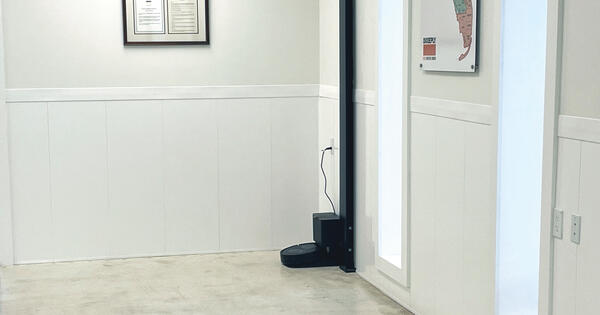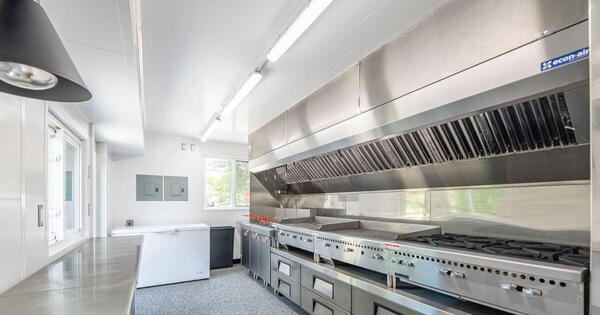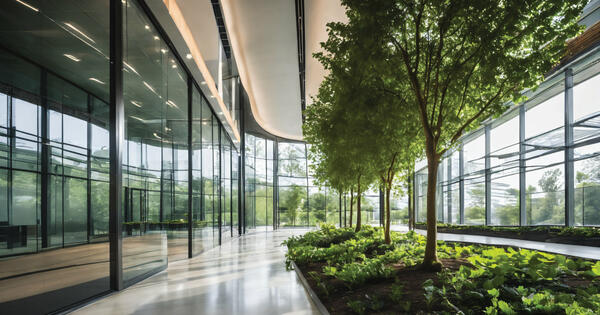In today’s construction landscape, durability, hygiene, and efficiency are more important than ever, and that’s exactly where wall protection panels are stepping in. Whether it's residential builds, commercial interiors, or agricultural spaces, traditional wall materials like drywall is starting to show its age. Builders are rethinking what “finished” really means — not just how something looks, but how well it stands up to daily use.
Wall protection panels like Trusscore Wall&CeilingBoard are engineered for performance. They’re designed to take abuse — resisting impact, moisture, and mold — and still look good doing it. That’s increasingly critical in an era where clients expect low-maintenance spaces that stay cleaner, longer. The demand is coming from all sides: homeowners want smarter solutions for messy areas like laundry rooms and garages, while business owners are focused on keeping their spaces hygienic and compliant without constant upkeep.
As expectations evolve, the shift away from labor-intensive, damage-prone materials is only accelerating. Builders who stay ahead of that curve are the ones leading the charge.
What Are Wall Protection Panels?
Wall protection panels are purpose-built wall coverings that offer a much higher level of durability than traditional finishes like drywall, tile, or painted surfaces. Unlike those materials — which can crack, swell, stain, or require frequent repainting — wall protection panels are designed to resist impact, moisture, chemicals, and everyday wear.
They’re commonly used as a finished surface in high-demand environments where standard walls just don’t hold up. These panels serve both functional and aesthetic purposes, often featuring smooth, washable finishes that are easy to clean and maintain.
Here are some of the most common materials used to manufacture wall protection panels:
- PVC (Polyvinyl Chloride): Lightweight, water-resistant, and easy to install — ideal for residential garages, utility rooms, and commercial interiors.
- FRP (Fiberglass Reinforced Plastic): Known for strength and water resistance, but typically glued over drywall and prone to delamination.
- Stainless Steel: Durable and hygienic, often found in food processing areas or commercial kitchens.
- Aluminum Composite Panels: Lightweight and rigid with a modern appearance, used in architectural and commercial settings.
Each material brings different strengths to the table, but they all share a common purpose: protecting walls from damage and simplifying long-term maintenance.


Where Wall Protection Panels Make the Most Impact
Wall protection panels shine in spaces where walls take a beating, whether that’s from water, equipment, pets, or daily foot traffic. That’s why they’re gaining traction across both residential and commercial construction.
Here are some of the most common areas where wall protection panels deliver real value:
- Garages and utility rooms: These are some of the most demanding areas in any home. Wall protection panels help resist impact from tools and vehicles, and they won’t warp or stain if things get wet.
- Mudrooms and laundry rooms: These transitional spaces are prone to moisture, splashes, and scuffs. Durable panels keep the walls looking clean with minimal maintenance.
- Agricultural or food service areas: In environments where sanitation is critical, non-porous, washable wall panels are easier to disinfect and hold up better than drywall or tile.
- Healthcare and hospitality interiors: From patient rooms to hotel kitchens, panels that meet hygiene standards and reduce long-term wear are becoming the new standard.
The trend is clear: Builders are no longer reserving wall protection panels for purely industrial use. More custom homes and commercial projects are incorporating these panels in high-traffic zones to improve resilience and reduce the need for future repairs.
Why Builders Are Replacing Drywall with More Durable Alternatives
For decades, drywall has been the default interior wall material — but in many applications, it’s just not keeping up. Builders and contractors are running into the same frustrations again and again: high maintenance costs, long installation times, and poor performance in demanding conditions.
The biggest pain points with drywall are rooted in its fragility. It dents and cracks easily, it’s vulnerable to moisture, and it often requires taping, mudding, sanding, and painting — not just once, but again and again as wear and tear set in. When installed in utility rooms, garages, or commercial settings, drywall often fails to deliver the durability that modern spaces demand.
Wall protection panels are solving these problems head-on by offering:
- Greater moisture resistance: Unlike drywall, these panels won’t swell, warp, or grow mold when exposed to humidity or water.
- Superior durability: High-impact surfaces resist dents, chips, and abrasions — even in high-traffic or high-abuse areas.
- Lower maintenance requirements: No repainting, patching, or deep cleaning needed. Most panels wipe clean with a cloth.
- Faster installation times: Many systems install without the messy, multi-step process that drywall requires — saving time and labor costs.
- Long-term value: Reduced callbacks, lower maintenance demands, and better longevity add up to real savings over time.
With clients expecting more from the spaces they live and work in, builders are increasingly making the switch to materials that last — not just for the short term, but for the life of the building.
Key Features to Look for in Wall Protection Panels
Not all wall protection panels are created equal. When you're choosing the right system for a project, performance matters, but so does practicality. The best panels are the ones that balance strength and aesthetics with simple, fast installation.
Here are the most important features to evaluate when selecting a wall protection panel:
- Moisture resistance: Choose non-porous materials that won’t absorb water or support mold growth — especially in basements, laundry rooms, or commercial kitchens.
- Impact resistance: Look for panels that won’t crack, chip, or dent easily — particularly in garages, corridors, or areas with carts or equipment.
- Cleanability and hygiene: Smooth surfaces that wipe clean in seconds reduce maintenance time and support better health standards in commercial settings.
- Fire ratings: Ensure the material meets local code requirements for fire resistance, especially in multifamily or commercial builds.
- Aesthetic versatility: Modern panel systems come in clean, neutral finishes or can be paired with storage systems or accessories for added functionality.
- Ease of installation: Panels that don’t require taping, sanding, or finishing reduce install time and labor costs — and get the job done faster.
Here’s how some of the most common materials compare:
- FRP: Strong and water-resistant but often glued over drywall, which adds cost and creates long-term adhesion concerns.
- PVC: Lightweight, durable, and fully waterproof — ideal for residential and commercial spaces with high moisture or activity levels.
- Tile: Visually appealing but expensive, heavy, and grout lines can be hard to keep clean.
- Metal panels: Extremely durable and hygienic but can be costly and lack design flexibility.
Choosing the right product means understanding the unique needs of the space and how the panel will perform over time — not just on day one.



Wall Protection Panel Spotlight: Trusscore Wall&CeilingBoard
Trusscore Wall&CeilingBoard isn’t just another wall protection panel — it’s a smarter alternative to traditional wall finishes that’s built to handle what drywall and FRP can’t.
Made from PVC, Trusscore panels are engineered to outperform on every front. They’re completely water- and mold-resistant, making them ideal for garages, workshops, laundry rooms, and commercial interiors where moisture is always a concern. They’re also incredibly strong — resistant to dents, scratches, and daily wear — yet lightweight and easy to handle on site.
Installation is fast and clean thanks to a tongue-and-groove system that clicks and screws into place without the need for mudding, sanding, or painting. That means fewer trades on site, faster project timelines, and happier clients.
Trusscore panels also come with a bright, semi-gloss finish that reflects light, making any space feel bigger and brighter. And because they integrate seamlessly with Trusscore SlatWall, it’s easy to add flexible storage wherever it’s needed — without compromising on aesthetics or durability.
Use cases range from:
- Residential projects: Ideal for mudrooms, basements, garages, laundry areas, and even home gyms.
- Commercial builds: Perfect for car washes, veterinary clinics, food processing spaces, and utility areas in retail or office buildings.
On the sustainability front, Trusscore is 100% recyclable and contributes toward LEED v4 credits, including those related to Indoor Environmental Quality and Material Resources.
The verdict from installers? It’s a game changer. They’re seeing faster installs, fewer callbacks, and better results — and that’s why more builders are making the switch.
Installation Insights for Contractors
When it comes to installation, wall protection panels like Trusscore Wall&CeilingBoard offer a serious time advantage over traditional materials like drywall or FRP. They're built for speed — without sacrificing quality.
Unlike drywall, there’s no need for taping, mudding, sanding, or waiting for paint to dry. And unlike FRP, which often requires glue, backing materials, and multiple coats of adhesive, Trusscore installs cleanly and efficiently.
Here’s why contractors find Trusscore easier and faster to work with:
- No finishing steps required: Panels lock into place with a tongue-and-groove system — no mud, tape, sanding, or painting necessary.
- Compatible with existing tools: Panels cut easily using standard saws and can be installed with basic fasteners. No specialized training or tools required.
- Minimal jobsite mess: With fewer wet trades involved, there’s less cleanup and disruption — ideal for fast-paced or occupied builds.
- Faster project turnaround: Less labor, fewer trades, and quicker installs mean jobs get wrapped up sooner and with fewer callbacks.
On average, labor rates for installing Trusscore range from $1.50 to $2.00 per square foot, depending on the complexity of the project and the experience level of the installer. More seasoned crews can often complete installs at the lower end of that range — or even less — thanks to efficiencies gained over time.
Some installers also choose to quote supplied and installed rates, bundling labor and materials into one project price, especially when they can pass along volume discounts to customers. It’s a flexible system that allows contractors to price competitively while still protecting their margins.
Cost Considerations and ROI
Wall protection panels sometimes come with a higher upfront cost than drywall, but for most contractors, that’s where the cost differences end. Once you factor in labor savings, reduced maintenance, and long-term durability, the return on investment becomes clear.
Here’s what to keep in mind when evaluating cost-effectiveness:
- Upfront cost vs. lifecycle value: While drywall might be cheaper per sheet, it often requires more labor to install and more maintenance over time. Wall protection panels last longer and hold up better.
- Reduced maintenance and replacements: These panels don’t need to be repainted, patched, or replaced nearly as often — lowering costs over the life of the build.
- Faster installation = reduced labor costs: Without the need for finishing steps, projects get done faster, freeing up your crew for more work. Average install labor rates fall between $1.50 to $2.00/sq ft and bundled quotes that include both materials and labor are becoming more common.
- Improved client satisfaction: Clients notice when things hold up — fewer dents, less mold, and easier cleaning make a big impact over time.
In high-growth areas like garage renovations, the numbers really start to add up. A standard two-car garage typically uses around 1,000 sq ft of Trusscore, which translates to $3,000 to $5,000 in material sales alone. When you include additional components — fasteners, insulation, plumbing, and electrical — the total project value grows even more.
For contractors, that means more opportunities to upsell, cross-sell, and increase revenue per project, all while delivering a superior result for the customer.
Why Now’s the Time to Make the Switch
Sticking with traditional materials like drywall might feel like the safe choice — but in today’s market, it’s becoming a liability. Clients are asking for cleaner, more durable finishes. They want spaces that require less upkeep and stand the test of time.
Builders who continue relying on outdated wall systems risk falling behind. Delays, callbacks, and maintenance complaints eat into profitability — and reputation.
Making the switch to wall protection panels, especially systems like Trusscore Wall&CeilingBoard, gives you a competitive edge:
- Faster installs mean more jobs per month.
- Higher quality outcomes mean happier clients — and more referrals.
- Long-term durability means fewer callbacks and warranty issues.
Now’s the time to upgrade your standard spec and start building with materials that match the demands of today’s homes and commercial spaces. Trusscore isn’t just a better wall — it’s a better way to build.
Ready to see what wall protection panels can do for your next project? Learn more about Trusscore Wall&CeilingBoard or talk to a dealer near you to get started.






